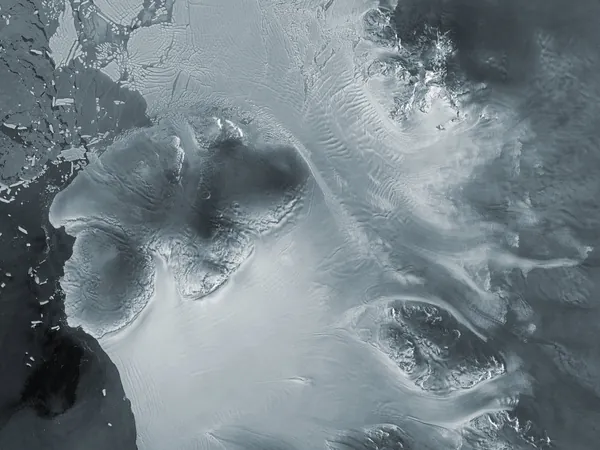
Glacial Heist: Antarctic Glacier Steals Ice From Neighboring Flow
2025-05-09
Author: Wei
A Shocking Discovery in Antarctica
In an astonishing revelation, scientists have found that a glacier in Antarctica is committing what can only be described as 'ice piracy'—rapidly stealing ice from its slower-moving neighbor. Thanks to advanced monitoring by Copernicus Sentinel-1 satellites, researchers uncovered that the Kohler East Glacier in West Antarctica is siphoning off ice at an unprecedented rate.
A Race Against Time
Previously, researchers believed such glacial interactions would unfold over centuries, but a recent study published in *The Cryosphere* has shattered that notion. Funded by the European Space Agency’s FutureEO program, this groundbreaking research reveals that the fast-flowing Kohler East is outpacing its nearby counterpart, Kohler West.
The Glacial Landscape
The Kohler, Pope, and Smith Glaciers are among the most rapidly changing ice flows in West Antarctica, located upstream of the Dotson and Crosson Ice Shelves. Their movements and melting rates are crucial indicators of future sea level rise.
A Deep Dive into the Data
A team from the University of Leeds utilized satellite imagery and data from 2005 to 2022 to analyze eight ice streams in the Pope-Smith-Kohler region. They discovered a staggering 51% increase in speed across these glaciers since 2005, with some streams more than doubling their velocity.
The Surprising Slowdown of Kohler West
While Kohler East surged faster, Kohler West bizarrely decelerated by 10%. Lead author Dr. Heather Selley explained that this slowdown is likely caused by Kohler West altering its flow direction toward its speeding neighbor. The interplay between their varying ice-thinning rates allows Kohler East to 'steal' ice from Kohler West, illustrating a remarkable instance of ice flow redirection.
Alarm Bells for Sea Levels
These findings are like alarm bells ringing in the context of climate change. The research indicates that the region is more unstable than previously thought, with the ice's grounding line—which marks the transition from land to floating ice—retreating at an accelerating pace. This could lead to severe ramifications for global sea levels.
A Call for Awareness
As Prof. Anna Hogg from the University of Leeds noted, the interactions between floating ice shelves and grounded glaciers are crucial to understanding the future of ice sheets. ESA Polar Science Coordinator Dr. Martin Wearing emphasized the power of satellite data in revealing the complex dynamics at play in these remote regions—insights that are vital for forecasting future changes.
The Future of Our Planet?
This remarkable study not only challenges previous assumptions about glacial behavior but also underscores the urgent need to monitor these ice flows closely. As climate change unfolds, the balance of these majestic glaciers could hold the key to understanding rising sea levels and their impending impact on coastal communities worldwide.

 Brasil (PT)
Brasil (PT)
 Canada (EN)
Canada (EN)
 Chile (ES)
Chile (ES)
 Česko (CS)
Česko (CS)
 대한민국 (KO)
대한민국 (KO)
 España (ES)
España (ES)
 France (FR)
France (FR)
 Hong Kong (EN)
Hong Kong (EN)
 Italia (IT)
Italia (IT)
 日本 (JA)
日本 (JA)
 Magyarország (HU)
Magyarország (HU)
 Norge (NO)
Norge (NO)
 Polska (PL)
Polska (PL)
 Schweiz (DE)
Schweiz (DE)
 Singapore (EN)
Singapore (EN)
 Sverige (SV)
Sverige (SV)
 Suomi (FI)
Suomi (FI)
 Türkiye (TR)
Türkiye (TR)
 الإمارات العربية المتحدة (AR)
الإمارات العربية المتحدة (AR)